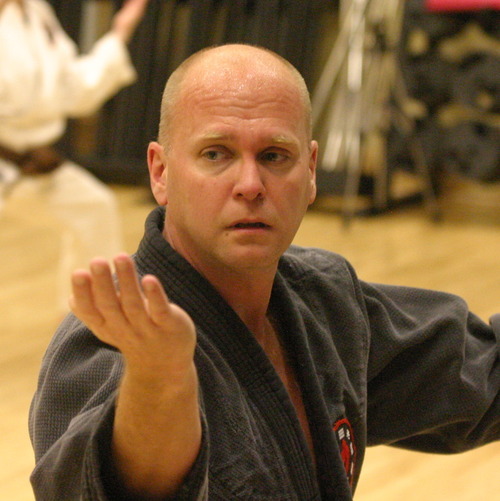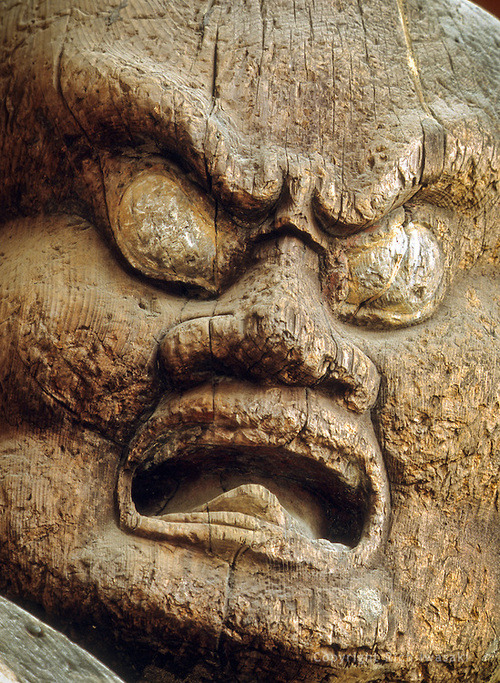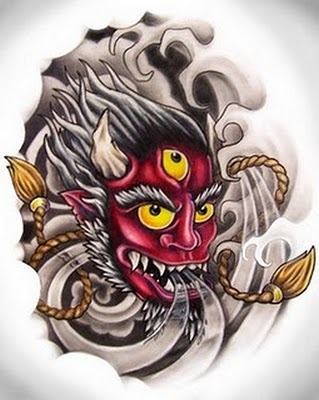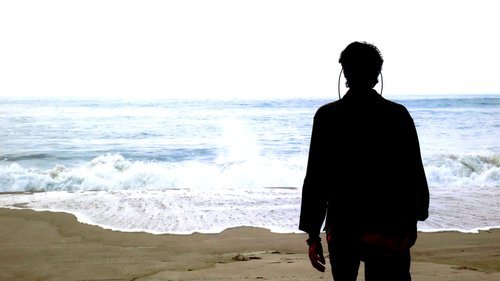KATA AS MOVING MEDITATION

Martial arts students often here about kata as a ‘moving meditation.’ This essay brings to light what this means in the context of Buddhist martial kata practice.
The following was an essay written by the late Buddhist Scholar, Nagaboshi Tomio. This particular presentation consists of both edits of the original work and interspersed commentary by Shifu, Hayashi Tomio.
JIHATSU NEN MOKUSO
Kinetic Meditation and Awareness
One way to experience stability and integration of mind and body lies in the practice of kata.
Few people are involved in physical disciplines that focus their minds on movement patterns as a mirror of their mental state. The consistent repetition of such patterns broadens the mind to its own body kinetic. By looking closely at our physical patterns (not the imposed pattern of the kata given by our teachers, but the pattern that is drawn out of the self from interacting with the outer form) we will eventually observe that, in fact, a unique kinetic pattern does exist. This begs the question, what is our optimal kinetic pattern. Random physical activities often lead only to random observations. Random alterations in our kinetic patterns leave us with a start-stop evolution.
Diligently memorizing a kata’s varied movements brings one into a direct awareness of the body’s actions. Although most students practice Kata mechanically in the early stages, later training will develop an expanded awareness of what is involved in their actions. This knowledge enables students to recognize and adjust their kinetic pattern. These patterns in turn reflect one’s body metabolism, posture, energy and power, generating considerable therapeutic effects.
Repetition of kata patterns reveals an inner behavior in regards to the outer, imposed pattern of the form. Each performer will orient his unique pattern to the outer structure much like trying to “fit into” a new item of clothing. Is it a little too tight, too soft? Should I be more intense, less rigid etc.? Kata tones up our musculature, quickens neural responsiveness. It adjusts the spine, increases cardiovascular health and grounds us into our own organic nature. Mind entwines the body and the body entwines the mind making us feel more settled and substantive.
When the movements of a particular Kata have become completely familiar – where one can perform them without the presence of hesitation or stress, a mental relationship develops to both the body and its movements to a much finer degree, freeing one from the kinetic pattern entirely and directing consciousness into a deep meditative absorption.
Many of our kinetic patterns are set to unconscious or habitual execution. Kata work rewires the ‘automatic piloting’ of our bodies. It makes us aware of potentially new, and previously unknown, patterns of thought and action.
This stage is not the sole property of the Central Philosophy1 student. It can be experienced by every student. However, without suitable Kuden2 the ability to interpret mind/body awareness will be greatly impaired.
The beginning kata student has no pre-established framework for which to contain or evaluate emerging new experiences of self, no ability to measure the quality of a movement. Kuden offers a framework upon which to ‘hang our experiences.’ A teacher’s explanation of what to be valued helps student’s to avoid or break fixations caused by their own self-evaluation of what is important to hold or release.
Continuous practice leads to a free and unrestrained Kata performance, so much so that the Kata can almost be performed without oneself being present.
I think the freedom here refers to being free from the physical restrictions of over-tight muscles, for example and free from the early mechanical impositions of trying on someone else’s kinesthetic clothing. “Without oneself being present” is open to several interpretations. There is the freeing of oneself from the surface performance, the superficial physical details of a kata sequence, i.e, paying attention to the number of spear thrusts one is doing so one don’t over or under-perform them. There I also the freedom of allowing the energies stirred by the pattern to flow uninhibited through the body.
Here a student will only have to begin the Kata to become instantly absorbed into its energy pattern, completely stilled and unaffected by the outside world. At this stage the student will encounter the kata’s inner movements and unconsciously and freely develop an almost spontaneous awareness.
As concentration focuses and deepens regarding the body’s energy patterns a state of self-absorption becomes evident as the practitioner’s attention shifts from the outside world to perceive an emerging ‘inside’ world. There is an intrinsic recognition of this inside world as valuable to one’s nature, which in turn elicits a natural and spontaneous curiosity about it.
Inward progression of the different meditation levels has been described in a certain pattern but these patterns are not experientially arranged. Students may encounter any of the stages mentioned on the list below in different orders. For the purposes of clarity nine stages are listed in order of logical, not experiential sequence.

THE NINE MEDITATIVE STAGES OF KATA
1. Awareness of breathing patterns
a. Concentrative b. Merging
2. Awareness of bodily extremities
a. Concentrative b. Merging
3. Awareness of the whole body kinetics
a. Concentrative b. Merging
4. Experience of unification
5. Experiencing and expressing the ‘wild’ mind
6. Experiencing and expressing the calmed mind
7. Controlled Concentration (Sammai)
8. Single pointed absorption of energy
9. Radical Awakening and Directional Awareness
You can see here a more precise definition of ‘meditation’ emerging. And it begs we answer new questions; Is controlled concentration the same as uncontrolled or involuntary concentration, as in either being distracted by an event that draws the attention, or deciding to hold the mind upon a single event of its choosing. What is a wild mind? What is a calmed mind? What is the relationship between the two?
From this point on experiences can no longer be usefully described.
Certain acquired mental states can only be perceived after one has entered them?
In orthodox monasteries emphasis is placed mainly upon points 1-2 and 7-8.
Within the Central Philosophy School many auxiliary methods are used in addition to those mentioned above. Visualization meditations are especially significant. An average student can attain most of the levels listed above, depending upon attitude and degree of practice. Recipients of Kuden have even more practices to study.
It is common for exoteric students to achieve many of these stages unaided, but they will have difficulty in recognizing and gaining their full advantage without guidance.
Without guidance there are still natural markers one will come across but they will be randomly acquired and even in their acquisition the full comprehension of these stages may never move one out of a limiting unconscious or visceral realm.
Within the eight different forms of traditional Yoga there are many similar mind states engendered by practice but the manner of progression is different in application. In Yoga the stage of complete absorption is called ‘Samadhi.’ However, there is a difference between Karate Samadhi and its Yogic form. Whereas Yoga Samadhi is directed towards union with the Divinity, the Karate-ka directs his gaze into what is termed ‘The Void’. The yogic Samadhi is theistically orientated and directed. The kempo (Buddhist) Samadhi goes beyond this concept entirely.
A great debate may be taken up on the above statements. Is God greater than the Void? Does the Void go beyond the concept of God? Is one state the mask of the other? Why this difference in goals – God versus Void?
Samadhi is used in the Central Philosophy training to make one more aware of the Buddha’s teachings. It is as if one is peering at oneself through a telescope.
We can take this metaphor to mean one of two things; the Path brings our life into a much sharper focus, or as we become more skilled we can focus more accurately upon our imperfections and see them clearly and objectively.
Here is a principal therapeutic statement concerning kata’s value. The kata leads us to our imperfections through repeated observation, not simply repeated performance.
There is also a deeper, more mystical aspect of the kinetic meditations creating many other stages beyond the nine outlined above.
This mystical aspect incorporates spiritual/energy work and other transcendental practices such as manifesting rituals and cures.

The fact that self-created awareness does not always necessitate a teacher has relegated it to the meditative ‘backwaters’ by orthodox teachers. This is not due to any bias, but rather because its practice lends itself readily to self-deception which can easily hinder a prospective student. A teacher is advisable for checking one’s level of attainment and quality of practice – quality being far more important than length of practice.
The more complicated part of this path is making ones way through your own mind and its complex of personal beliefs. It is through this fundamental platform of beliefs, that we color our separate realities, and will find the cause of most of our suffering.

The school which emphasizes the mystical aspect of kinetic Samadhi is called Kongo Raiden. Its name describes the two aspects of Samadhi attainment. Kongo = Diamond (which being clear, hard and indestructable is compared with cohesive all transcending Wisdom) and Raiden = Thunderbolt (which being all powerful and non-distinctive is likened to the power of Truth and reality).
All transcending Wisdom, Truth and Reality are the primary attributes sought in meditation. Arriving at the full embrace of these three attributes ends the meditative journey much like achieving perfection of a yogic asana (posture) discards the need to do it further. Once the state sought has been gained ignorance about the nature of reality is overcome and suffering is transcended.
Together these two attributes describe one who has mastered all levels of meditation completely and perfectly and attained fullest emancipation from suffering in all its manifestations. Another word describing this attainment is Mushindo. The term Mu means emptiness, the plenum Void. Shin means Heart in the sense of penetrating to the innermost reality. Do means the path or method of training which one experiences.
The name Mushindo is used to describe the order of attainment itself.
• First, one has to win the path itself (DO)
• Second, one penetrates to one’s heart (SHIN)
• Last, one experiences the plenum void (MU)
This is the traditional teaching regarding order of progress.
Claim the Heart of the Void!
The teachings of the various Sammai (Sammadhi) place absolute value upon self-authenticity within the framework of the Precepts. We can see from this that the concept of ‘truth’ enters radically different forms from ordinary understanding of the word. Being true, means being authentic. Being authentic means recognizing one’s absolute reality according to the Dharma teachings.
The Buddha taught us that there are two levels of truth. The first is relative, mundane truth. The second is ultimate truth. It is towards this ultimate truth that all training is directed. During our training and subsequent development we may experience some transition of mundane consciousness into its transcendental counterpart. This transition is called Kensho, which means seeing into one’s real heart.
You are capturing something greater than your own self-identifications and cultural labels as for example, employee, father, lover, mall-shopper, etc. One transcends the conventional description of self for the larger universal descriptor of Self, with a big ‘S’.
The true nature of Dharma seen subjectively is the real heart. The true nature of the heart seen objectively is the Dharma. They are like two sides of the same coin. A similar correspondence can be made between the mind and body and the body and spirit. The Kensho experience reveals and validifies our training method.
When you have a Kensho experience as a result of training, you immediately recognize the experience came from that effort.
Without Kensho there is no path being followed at all.
Randomized insight cannot lead us to the path nor the experience. Fragmented forays into the authentic self are simply not enough to ‘crack the shell.’ A prolonged and concerted effort is necessary to penetrate the transcendental realms.
One’s teacher can best recognize this experience for he can tell its form and most useful direction. Kensho or any other meditative experience does not automatically qualify one to be a teacher. It simply confirms that we are travelling along the correct path. A complete Kensho is termed Satori or ‘Awakening’ and even after one has attained this traditional teaching, it still requires a ‘maturing’ period of up to ten years before one can express it.
We can analogize this lengthy maturing period to a single kumite event where a novice, who knows which offensive technique to execute, cannot mobilize his body fast enough to capitalize on his opponent’s opening before its too late. It simply takes time to bring our realizations into our practical affairs. The more one practices, the faster the manifestations.
It is only after this that one becomes authentic in a real active sense. The possession of rank or title means nothing to such a person who has experienced Satori and this non-attachment clearly differentiates the real teacher from imitators.
Non-attachment here is distinguished from an ego state of detachment as in being ‘aloof’ or ‘cool’. An attribute of authentic non-attachment defines one who has awakened. Here one is non-attached because his paradigm has enlarged to embrace the full spectrum of reality. There is nothing to attach oneself to if you are already everything and nothing.
 The teacher who attains this high level becomes then his own authority and holds the same rank as every other similarly attained person. There is no hierarchy here at all.
The teacher who attains this high level becomes then his own authority and holds the same rank as every other similarly attained person. There is no hierarchy here at all.
The teaching of mystical Buddhism explains that receiving Kuden is an important point in training, for by it one becomes the holder of the way to awakening. Without Kuden there is no authentic teacher or teaching at all. One is not real just because some outer authority has ‘approved’ you but because a recipient is now in a position to approve himself.
Those who ‘know it’ don’t need another to validate themselves. Ones authenticity extends into the two worlds that we exist in—the material and the spiritual.
To give an example – in history, by reasons of political expedience or ecclesiastical trickery, some famous church figures have found themselves awarded a rank akin that of a Saint. They have been ‘approved’ and ‘authenticated’ by the established bodies and accepted as such by the contemporary populace. In their hearts they know that they are not Saints but for the sake of the public good they maintain their position, silently accepting the accord due to them. The first situation – that of having the rank awarded them – is conventional truth. The second – of knowing what they really are in truth – can be likened to real truth. Likewise, the reverse can occur. Someone may be thoroughly condemned by the authorized body of approval but in reality be completely authentic and true. This all serves to clearly show that we must follow the Buddha’s teaching firmly and not believe things just because they are spoken. Instead, test everything in the light of your own experience and understanding. This is the real being of the Sammai which is self born.
1 Central Philosophy refers to those schools preserving and presenting authentic spiritual teachings.
2 Kuden is an oral explanation of the inner meaning of practice.
Edited from the original work of Nagaboshi Tomio by Hayashi Tomio, shifu, 2008

Get Smart – Get Physical
Ideas for a Discerning Mind
The Wind School
